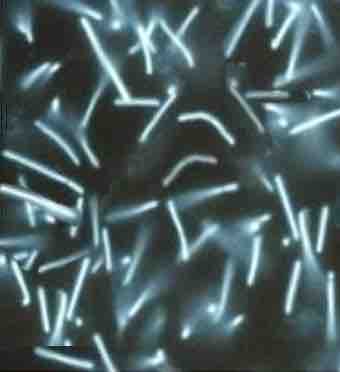Classification seeks to describe the diversity of bacterial species by naming and grouping organisms based on similarities. Bacteria can be classified on the basis of cell structure, cellular metabolism, or on differences in cell components such as DNA, fatty acids, pigments, antigens and quinones.
Bacteria can be classified by their optimal growth temperature. The following are the five classifications:
- Hyperthermophile (60 degrees C and upwards)
- Thermophile (optimal growth between 45 and 122 degrees)
- Mesophile (20 and 45 degrees C)
- Psychrotrophs (will survive at 0 degrees C, but prefer mesophilic temperature
- Psychrophiles (-15 and 10 degrees C or lower)
A mesophile is an organism that grows best in moderate temperature, neither too hot nor too cold, typically between 20 and 45 °C (68 and 113 °F). The term is mainly applied to microorganisms.The habitats of these organisms include especially cheese, yogurt, and mesophile organisms are often included in the process of beer and wine making. Organisms that prefer cold environments are termed psychrophilic, those preferring warmer temperatures are termed thermophilic and those thriving in extremely hot environments are hyperthermophilic. All bacteria have their own optimum environmental surroundings and temperatures in which they thrive the most. A thermophile is an organism — a type of extremophile — that thrives at relatively high temperatures, between 45 and 122 °C (113 and 252 °F). Thermophilic eubacteria are suggested to have been among the earliest bacteria. Thermophiles are found in various geothermally heated regions of the Earth, such as hot springs like those in Yellowstone National Park. and deep sea hydrothermal vents, as well as decaying plant matter, such as peat bogs and compost.As a prerequisite for their survival, thermophiles contain enzymes that can function at high temperatures. Some of these enzymes are used in molecular biology (for example, heat-stable DNA polymerases for PCR), and in washing agents.

Methanopyrus kandleri
Methanopyrus kandleri can survive and reproduce at 122 °C.